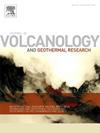Global sensitivity analysis of models for volcanic ash forecasting
IF 2.3
3区 地球科学
Q2 GEOSCIENCES, MULTIDISCIPLINARY
Journal of Volcanology and Geothermal Research
Pub Date : 2025-07-03
DOI:10.1016/j.jvolgeores.2025.108393
引用次数: 0
Abstract
Volcanic ash is a widespread and destructive volcanic hazard. Timely and accurate forecasts for ash deposition and dispersal help mitigate the risks of volcanic hazards to society. Producing these forecasts requires numerous simulations with varying input parameters to encapsulate uncertainty and accurately capture the actual event to deliver a reliable forecast. However, exploring all possible combinations of input parameters is computationally infeasible in the lead up to an eruption. This research explores the input space of two volcanic ash transport and dispersion models, Tephra2, which is based on a simplified analytical solution, and Fall3D, which is a computational model based on more general assumptions, in the context of forecasting an unknown future eruption. We use the exemplar of Taranaki Mounga (Mount Taranaki), Aotearoa New Zealand, which has an estimated 30% to 50% chance of an explosive eruption in the next 50 years. We statistically determine how much each input parameter contributes to model output variance through a global sensitivity analysis via Sobol’ indices and the extended Fourier Amplitude Sensitivity Test (eFAST). Our findings show that grain size distribution, diffusion, plume shape, and plume duration (Fall3D only) have a substantial first-order impact on model output variance. In contrast, mass, particle density, and plume height have minimal impact in the first-order but become influential when considering parameter-parameter inter-relationships (total-order). The results not only enhance our understanding of model sensitivities but also point to improved efficiency in forecasting efforts.
火山灰预测模型的全球敏感性分析
火山灰是一种广泛存在的破坏性火山灾害。及时准确地预报火山灰沉积和扩散有助于减轻火山灾害给社会带来的风险。产生这些预测需要使用不同输入参数进行大量模拟,以封装不确定性并准确捕获实际事件,从而提供可靠的预测。然而,在火山爆发之前,探索所有可能的输入参数组合在计算上是不可行的。本研究探索了基于简化解析解的Tephra2和基于更一般假设的计算模型Fall3D两种火山灰运输和分散模型在预测未知未来喷发背景下的输入空间。我们以新西兰奥特罗阿的塔拉纳基蒙加(塔拉纳基山)为例,估计在未来50年内有30%至50%的机会爆发。我们通过Sobol指数和扩展傅立叶振幅灵敏度测试(eFAST)进行全局敏感性分析,统计确定每个输入参数对模型输出方差的贡献。我们的研究结果表明,粒径分布、扩散、羽流形状和羽流持续时间(仅限Fall3D)对模型输出方差有实质性的一阶影响。相比之下,质量、颗粒密度和羽流高度在一阶上的影响最小,但在考虑参数-参数相互关系(全阶)时就会产生影响。结果不仅增强了我们对模型敏感性的理解,而且指出了预测工作效率的提高。
本文章由计算机程序翻译,如有差异,请以英文原文为准。
求助全文
约1分钟内获得全文
求助全文
来源期刊
CiteScore
5.90
自引率
13.80%
发文量
183
审稿时长
19.7 weeks
期刊介绍:
An international research journal with focus on volcanic and geothermal processes and their impact on the environment and society.
Submission of papers covering the following aspects of volcanology and geothermal research are encouraged:
(1) Geological aspects of volcanic systems: volcano stratigraphy, structure and tectonic influence; eruptive history; evolution of volcanic landforms; eruption style and progress; dispersal patterns of lava and ash; analysis of real-time eruption observations.
(2) Geochemical and petrological aspects of volcanic rocks: magma genesis and evolution; crystallization; volatile compositions, solubility, and degassing; volcanic petrography and textural analysis.
(3) Hydrology, geochemistry and measurement of volcanic and hydrothermal fluids: volcanic gas emissions; fumaroles and springs; crater lakes; hydrothermal mineralization.
(4) Geophysical aspects of volcanic systems: physical properties of volcanic rocks and magmas; heat flow studies; volcano seismology, geodesy and remote sensing.
(5) Computational modeling and experimental simulation of magmatic and hydrothermal processes: eruption dynamics; magma transport and storage; plume dynamics and ash dispersal; lava flow dynamics; hydrothermal fluid flow; thermodynamics of aqueous fluids and melts.
(6) Volcano hazard and risk research: hazard zonation methodology, development of forecasting tools; assessment techniques for vulnerability and impact.

 求助内容:
求助内容: 应助结果提醒方式:
应助结果提醒方式:


